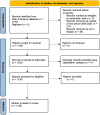A Bibliometric Analysis on Research Trends in Paediatric Epilepsy Treatment From 2005 to 2025
- PMID: 40786298
- PMCID: PMC12335356
- DOI: 10.7759/cureus.87688
A Bibliometric Analysis on Research Trends in Paediatric Epilepsy Treatment From 2005 to 2025
Abstract
The objective of this bibliometric analysis was to evaluate trends in paediatric epilepsy treatment research from 2005 to 2025. Through assessing which journals, countries, authors, and institutions have been the most productive and mapping trends in keywords used over time, the study aims to reveal emerging areas of interest and inspire ideas for future research. A total of 1418 relevant documents were retrieved from the Web of Science database. Documents outside of the target time period and non-English documents were excluded. From the 1152 remaining documents, 17 duplicates were removed using OpenRefine (OpenRefine). The final 1135 documents were then analysed using VosViewer (VOSviewer - Visualizing scientific landscapes) and Bibliometrix (https://www.bibliometrix.org/). The analysis revealed a stable number of annual global publications until a notable increase since 2018. The USA leads the way with the greatest research output (298 articles) and the highest number of total citations (6565). Harvard University emerged as the most productive institution (111 articles), whilst Epilepsia was the most productive journal (253 articles). Keyword co-occurrence analysis revealed a shift in research from earlier documents focusing more on traditional drug therapies to more recent articles focusing on cannabidiol based therapies, laser ablation, and vagal nerve stimulation. This bibliometric analysis provides new insights into the evolution of paediatric epilepsy treatment research. It helps to demonstrate the leading contributors in the field over the last 20 years, as well as highlighting emerging new trends. The results of the analysis underline the shift in the research away from more traditional treatments to investigating alternative therapies, including cannabidiol based therapies, dietary interventions, laser ablation, and vagal nerve stimulation. Through identifying these trends in the research and mapping author collaboration networks, it is hoped that this study can provide a foundational reference for researchers when planning future studies.
Keywords: anti-epileptic; childhood; intervention; management; seizure; therapy.
Copyright © 2025, Squires et al.
Conflict of interest statement
Conflicts of interest: In compliance with the ICMJE uniform disclosure form, all authors declare the following: Payment/services info: All authors have declared that no financial support was received from any organization for the submitted work. Financial relationships: All authors have declared that they have no financial relationships at present or within the previous three years with any organizations that might have an interest in the submitted work. Other relationships: All authors have declared that there are no other relationships or activities that could appear to have influenced the submitted work.
Figures







References
-
- ILAE official report: a practical clinical definition of epilepsy. Fisher RS, Acevedo C, Arzimanoglou A, et al. Epilepsia. 2014;55:475–482. - PubMed
-
- Incidence and prevalence of childhood epilepsy: a nationwide cohort study. Aaberg KM, Gunnes N, Bakken IJ, et al. Pediatrics. 2017;139 - PubMed
-
- Cause-specific mortality and life years lost in people with epilepsy: a Danish cohort study. Dreier JW, Laursen TM, Tomson T, Plana-Ripoll O, Christensen J. Brain. 2023;146:124–134. - PubMed
-
- Life expectancy in people with newly diagnosed epilepsy. Gaitatzis A, Johnson AL, Chadwick DW, Shorvon SD, Sander JW. Brain. 2004;127:2427–2432. - PubMed
Publication types
LinkOut - more resources
Full Text Sources
